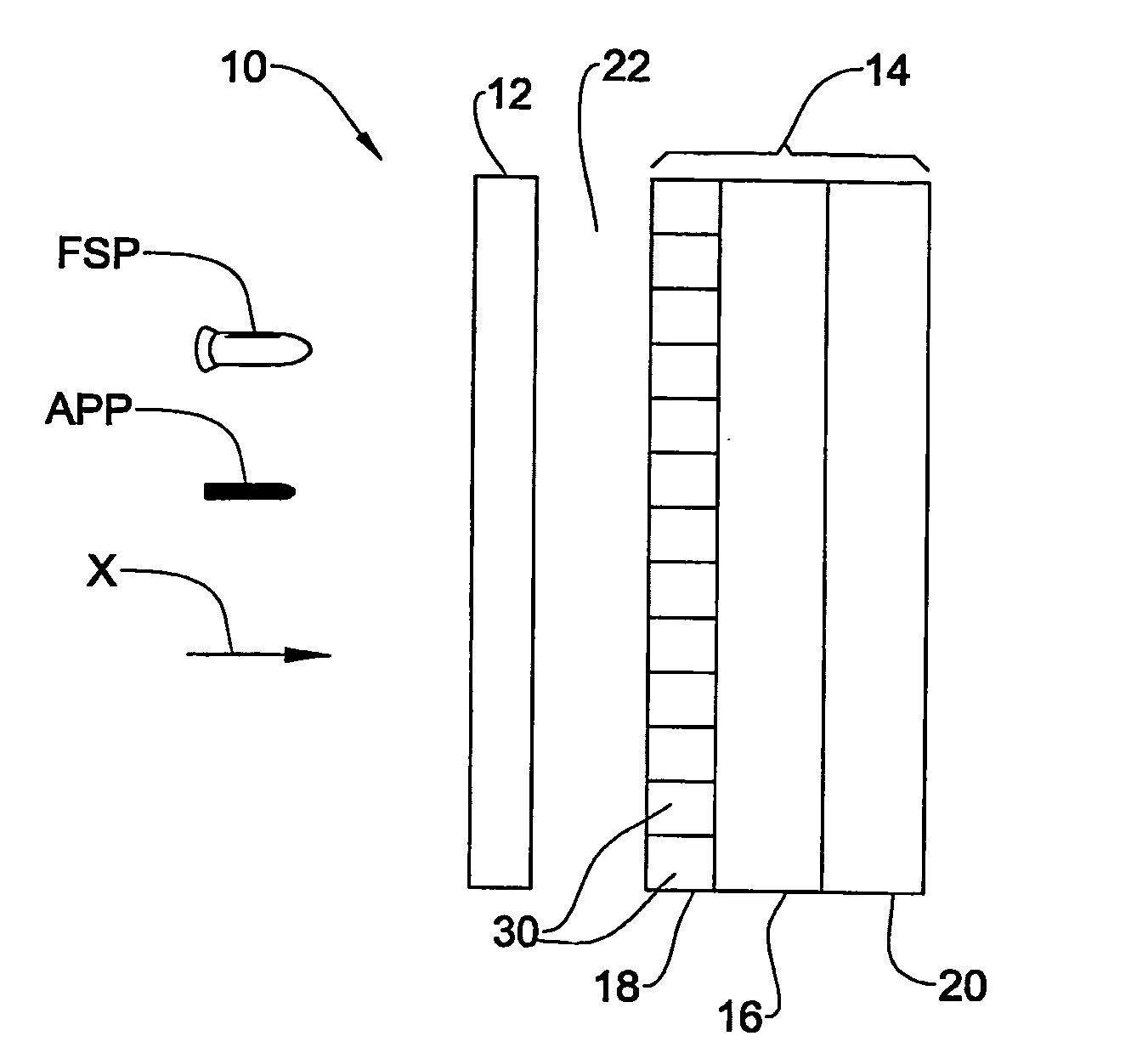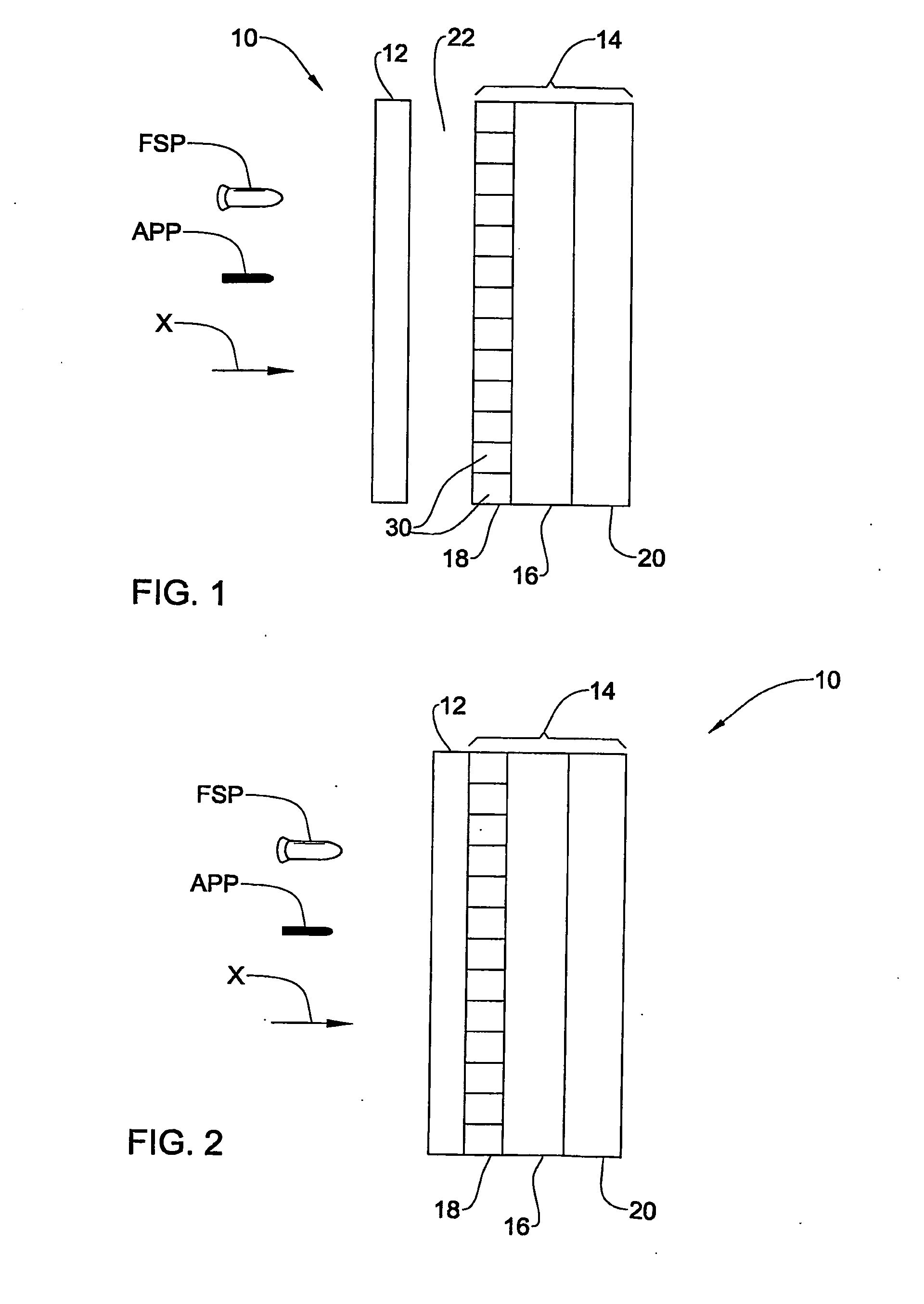Multi-Functional Armor System
a multi-functional, armor technology, applied in the field of ballistic armor, can solve the problems of exposing the vehicle to piercing, unable to protect at all from a certain type of projectile, and generally not providing protection against a plurality of types
- Summary
- Abstract
- Description
- Claims
- Application Information
AI Technical Summary
Benefits of technology
Problems solved by technology
Method used
Image
Examples
Embodiment Construction
[0016]FIG. 1 is a schematic representation of ballistic armor 10 according to one embodiment of the present invention, adapted to protect a vehicle (not shown) against both a fragment-simulating projectile (FSP) and an armor piercing projectile (APP) traveling in the direction indicated by arrow X.
[0017]The armor 10 comprises an auxiliary layer 12 and a main armor layer, which may or may not be separated by a gap 22, as shown in FIGS. 1 and 2.
[0018]The main armor layer 14 comprises a base layer 16, an add-on layer 18 and, optionally, an inner liner 20.
[0019]The base layer 16 is typically made from a hard metallic material such as RHA or high hardness steel which may have a thickness between 4 mm and 20 mm. In the present embodiment, this layer is constituted by the sidewall of the vehicle protected by the armor 10.
[0020]Alternatively, the base layer may comprise dual hardness armor (DHA). For example, such DHA may comprise a layer of UHH steel facing the projectile, and a layer of H...
PUM
 Login to View More
Login to View More Abstract
Description
Claims
Application Information
 Login to View More
Login to View More - R&D
- Intellectual Property
- Life Sciences
- Materials
- Tech Scout
- Unparalleled Data Quality
- Higher Quality Content
- 60% Fewer Hallucinations
Browse by: Latest US Patents, China's latest patents, Technical Efficacy Thesaurus, Application Domain, Technology Topic, Popular Technical Reports.
© 2025 PatSnap. All rights reserved.Legal|Privacy policy|Modern Slavery Act Transparency Statement|Sitemap|About US| Contact US: help@patsnap.com


